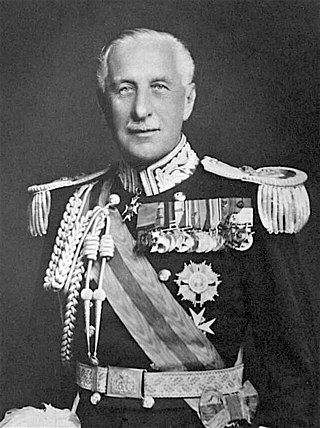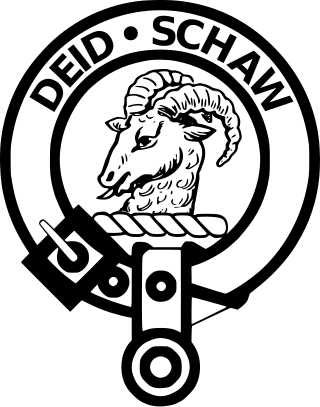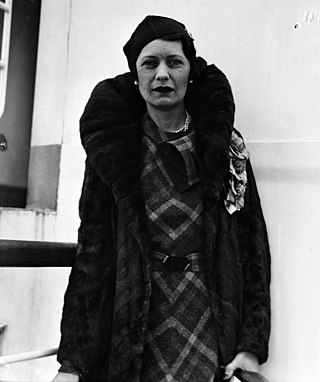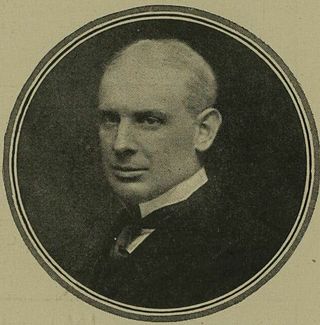
Brigadier General Alexander Gore Arkwright Hore-Ruthven, 1st Earl of Gowrie, was a British Army officer who served as the 10th Governor-General of Australia, in office from 1936 to 1945. He was previously Governor of South Australia (1928–1934) and Governor of New South Wales (1935–1936).
The Peerage of the United Kingdom is one of the five Peerages in the United Kingdom. It comprises most peerages created in the United Kingdom of Great Britain and Ireland after the Acts of Union in 1801, when it replaced the Peerage of Great Britain. New peers continued to be created in the Peerage of Ireland until 1898.

Earl of Carlisle is a title that has been created three times in the Peerage of England.

Earl of Seafield is a title in the Peerage of Scotland. It was created in 1701 for James Ogilvy, who in 1711 succeeded his father as 4th Earl of Findlater. The earldoms of Findlater and Seafield continued to be united until 1811, when the earldom of Findlater became dormant, while the earldom of Seafield remains extant.

Earl of Gowrie is a title that has been created twice, once in the Peerage of Scotland and once in the Peerage of the United Kingdom, both times for members of the Ruthven family. It takes its name from Gowrie, a historical region and ancient province of Scotland. On 23 August 1581, William Ruthven, 4th Lord Ruthven, was created Earl of Gowrie by James VI, King of the Scots. He was executed for high treason, attainted and his peerages forfeited on 28 May 1584. Two years later in 1586, the attainder was reversed and his son, the second Earl, was restored as Earl of Gowrie and Lord Ruthven, but both peerages were forfeited after the alleged plot and subsequent death of the second Earl's younger brother, the third Earl, in 1600.

Lord Kinloss is a title in the Peerage of Scotland. It was created in 1602 for Edward Bruce, later Master of the Rolls, with remainder to his heirs and assigns whatsoever. In 1604 he was also made Lord Bruce of Kinloss, with remainder to his heirs male, and in 1608 Lord Bruce of Kinloss, with remainder to any of his heirs. He was succeeded by his son, the second Lord, who was killed in a duel in 1613.

Earl of Brentford was a title that was created twice in Peerage of England. It was first created in 1644 when the Scottish soldier and diplomat Patrick Ruthven, 1st Earl of Forth, was made Earl of Brentford, in the County of Middlesex. He had already been created Lord Ruthven of Ettrick in 1639 and Earl of Forth in 1642, both in the Peerage of Scotland. He had no surviving male issue and the titles became extinct on his death in 1651. Lord Brentford was a great-grandson of William Ruthven, 1st Lord Ruthven. His brother William Ruthven was the grandfather of Francis Ruthven, who was created a Baronet, of Redcastle, in 1666. The latter married Elizabeth, daughter of Thomas Ruthven, 1st Lord Ruthven of Freeland, great-grandson of William Ruthven, 2nd Lord Ruthven. Their daughter, Isabel, succeeded as 5th Lady Ruthven of Freeland in 1722.

The Clan Ruthven is a Lowland Scottish clan.
Baron Ruthven of Gowrie, of Gowrie in the County of Perth, is a title in the Peerage of the United Kingdom, held by the Earl of Gowrie since 1956. It was created in 1919 for Walter Hore-Ruthven, 1st Baron Ruthven of Gowrie, who claimed also to be 9th Lord Ruthven of Freeland, in the Peerage of Scotland.
Lord Ruthven may refer to:

Bridget Helen Monckton, 11th Lady Ruthven of Freeland, Dowager Viscountess Monckton of Brenchley, CBE was a British peeress and Conservative member of the House of Lords best remembered as the wartime commander of women's services in India.

Charles James Stanley Howard, 10th Earl of Carlisle, DL, styled Viscount Morpeth from 1889 to 1911, was a British soldier, peer, and Liberal Unionist politician.
The Hon. Alexander Hardinge Patrick Hore-Ruthven was a British soldier and poet. He was born in Quetta, British India, the sole surviving child of Alexander Hore-Ruthven and Zara Eileen Pollok.

Zara Hore-Ruthven, Countess of Gowrie was the Anglo-Irish wife of the 1st Earl of Gowrie, Governor of South Australia 1928–34, Governor of New South Wales 1935–36 and the longest serving Governor-General of Australia 1936–44. She was renowned for her work in promoting the welfare of children in Australia, and the Lady Gowrie Child Centres were named in her honour.
Lieutenant-Commander George Josslyn L'Estrange Howard, 11th Earl of Carlisle, styled Viscount Morpeth from 1911 to 1912, was a British nobleman, politician, and peer.
Charles James Ruthven Howard, 12th Earl of Carlisle, 12th Lord Ruthven of Freeland MC, styled Viscount Morpeth until 1963, was an English nobleman, politician, and peer.
Major General Walter Patrick Hore-Ruthven, 10th Lord Ruthven of Freeland, 2nd Baron Ruthven of Gowrie,, known as Master of Ruthven from 1870 to 1921, was a senior British Army officer. He served as Major-General commanding the Brigade of Guards and General Officer Commanding London District from 1924 to 1928, and was then Lieutenant Governor of Guernsey until 1934.
The feudal barony of Dirleton was a feudal barony with its caput baroniae originally at Castle Tarbet, Elbottle Castle and later at Dirleton Castle in East Lothian, Scotland. The Lordship & Barony of Dirleton lay in East Lothian a few miles west of North Berwick, the land comprising the Caput of the Barony is today only a little over 40 acres, including the Island of Lamb, North and South Dogs in the east coast of Scotland. Its ruined castle, two triangular greens and the buildings are grouped in the traditional style of a medieval township. Dirleton Castle was built in the middle of the twelfth century by a branch of the Anglo-Norman family of De Vaux, a family with its origins in Rouen, Normandy, which had settled in Dirleton during the reign of King Malcolm IV (1153‒1165). The original castle was modelled on contemporary French castles, in particular Coucy la Chateaux north of Paris. Dirleton Castle was defended against the invading army of Edward I of England in June 1298, but eventually fell to Anthony Beck, the fighting Bishop of Durham. In 1311 the castle was recaptured by the Scots and Robert the Bruce ordered that it be reduced (ruined) to eliminate the possibility of it being occupied by the English in the future. Dirleton was in the hands of the De Vaux family for about two centuries.
Walter James Hore-Ruthven, 9th Lord Ruthven of Freeland, 1st Baron Ruthven of Gowrie, previously known as Walter James Hore, was a British soldier and peer, a member of the House of Lords from 1919 until his death.
Hore-Ruthven is the surname of:









